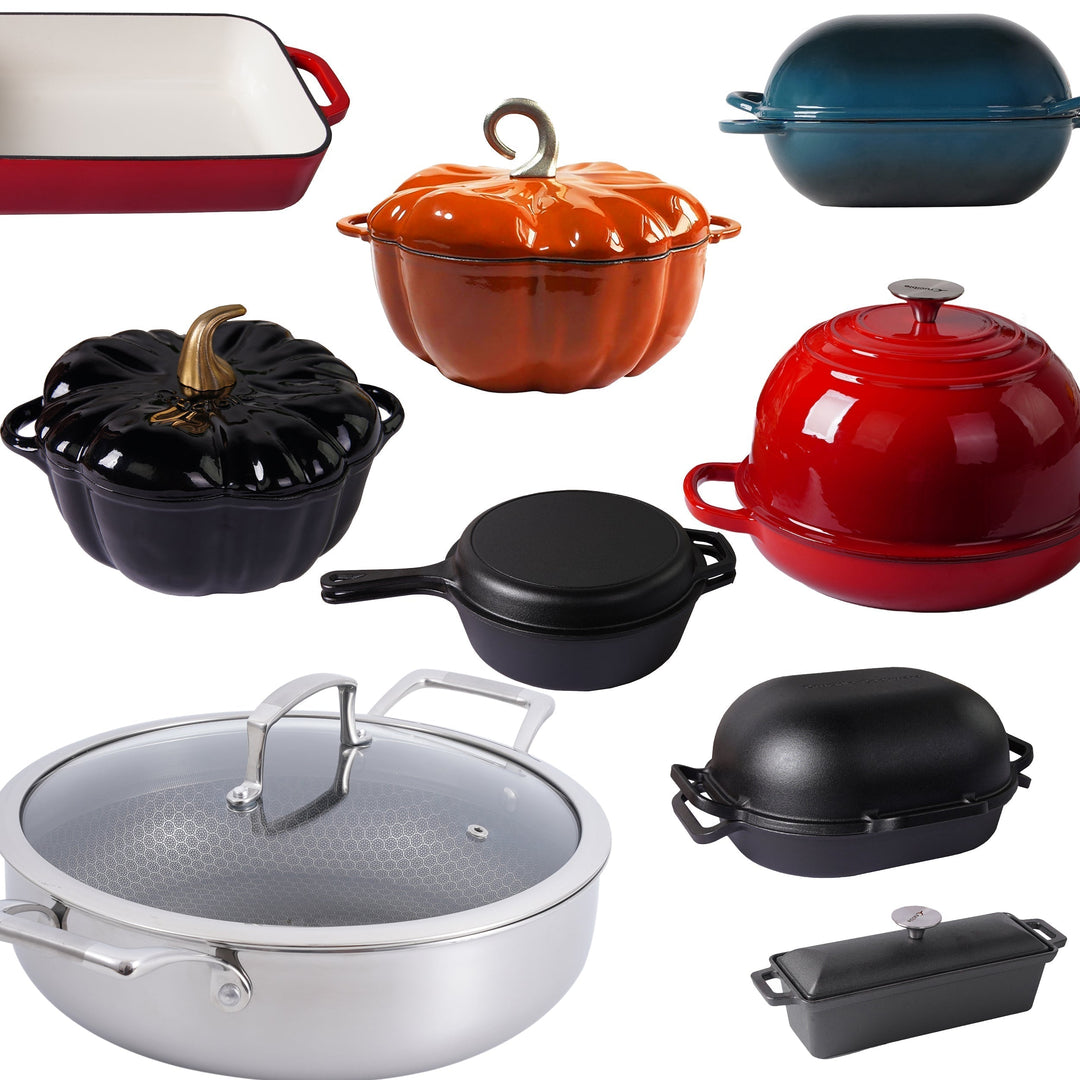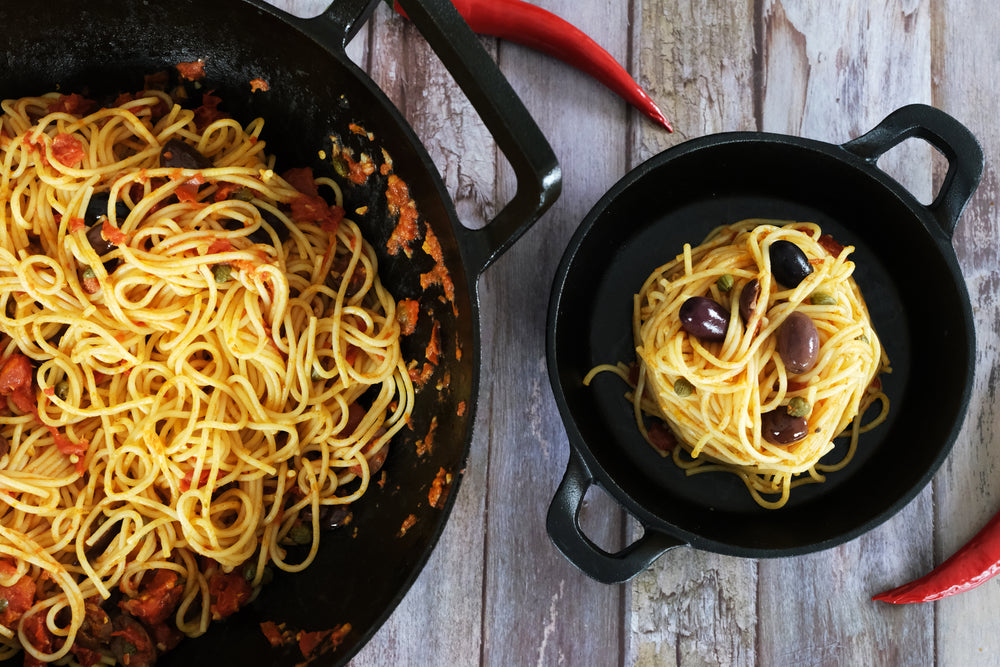Золотой эликсир кулинарии: всё о топлёном масле

Жидкое золото кулинарной истории
В мире кулинарии существует ценный ингредиент, выдержавший испытание временем – гхи. Известный как «жидкое золото» в кулинарии, гхи обладает богатой историей, неповторимым вкусом и множеством применений, которые сделали его незаменимым на кухнях по всему миру. В этом блоге мы рассмотрим увлекательное путешествие гхи – от его древних истоков до современного кулинарного признания.
Историческое путешествие гхи
Гхи берет свои корни в древней Индии, насчитывающей более 5000 лет. История гхи уходит далеко в глубь веков, делая его поистине вечным кулинарным сокровищем. Он был неотъемлемой частью аюрведической медицины и традиционной индийской кухни. За столетия гхи распространился по Азии, став любимым ингредиентом в индийской, ближневосточной и юго-восточноазиатской кухнях.
Вот взгляд на его историческое значение:
-
Древняя Индия: История гхи тесно связана с корнями индийской цивилизации. В древней Индии гхи считался символом чистоты, жизненной силы и питания. Его использовали не только в кулинарии, но и в священных ритуалах, в качестве подношения богам и масла для ламп в храмах.
-
Аюрведическая медицина: Гхи занимал важное место в аюрведической медицине, где ему приписывали многочисленные полезные свойства. Практики аюрведы считали его жизненно важным элементом для улучшения пищеварения, укрепления иммунной системы и повышения общего благополучия.
-
Древний Египет: Влияние гхи выходило за пределы Индии. В Древнем Египте его использовали как мазь для кожи и увлажнитель для волос, что подчеркивало его универсальность.
-
Ближний Восток и дальше: По мере расширения торговых путей росла и популярность гхи. Он стал основным ингредиентом в кухнях Ближнего Востока, занимая важное место в таких блюдах, как баклава. Со временем гхи проник в Юго-Восточную Азию, где стал неотъемлемой частью кулинарных традиций таких стран, как Малайзия и Индонезия.
-
Колониальное влияние: Гхи даже сыграл роль в колониальной истории Индии. Во время Британского раджи гхи был очень востребованным товаром, большие партии которого экспортировались в Европу. Спрос на гхи в Европе способствовал росту его производства в Индии.
-
Современное возрождение: В последние годы гхи вновь приобрел популярность, особенно среди людей, заботящихся о здоровье. Его насыщенный вкус и предполагаемые полезные свойства привели к включению гхи в различные современные диеты, такие как палео и кето.
Кулинарное наследие
Исторический путь ghee свидетельствует о его неизменной привлекательности и значимости. От древних ритуалов до мировых кухонь, оно оставило неизгладимый след в кулинарных традициях по всему миру. Сегодня, продолжая ценить его насыщенный вкус и универсальность, мы чтим века традиций и культуры, которые сформировали этот золотой эликсир в любимый ингредиент.

Почему стоит выбрать Ghee: преимущества
-
Высокая точка дымления: Одна из главных причин, почему повара любят ghee — его высокая точка дымления. Приблизительно 485°F (250°C), оно отлично подходит для методов приготовления при высокой температуре, таких как жарка и обжаривание.
-
Насыщенный ореховый вкус: Ghee обладает уникальным ореховым ароматом и вкусом, который придает блюдам приятную глубину.
-
Безлактозный: Ghee практически не содержит лактозы и молочных твердых веществ, что делает его подходящим для людей с непереносимостью молочных продуктов.
Ghee против масла: в чем разница
Хотя и ghee, и масло получены из молочных продуктов, они отличаются по нескольким параметрам:
- В ghee удалены молочные твердые вещества и вода путем томления и процеживания, что делает его более подходящим для приготовления при высоких температурах.
- Насыщенный ореховый вкус ghee отличает его от обычного масла, которое имеет более мягкий вкус.
- Ghee имеет более длительный срок хранения благодаря низкому содержанию влаги.
Когда использовать Ghee
Ghee проявляет себя в различных кулинарных применениях:
- Обжаривание и жарка: Его высокая точка дымления делает ghee идеальным для быстрого обжаривания и фритюра.
- Выпечка: Ghee придает выпечке насыщенный вкус.
- Прокаливание: Полейте им овощи или зерновые для дополнительного вкусового акцента.
- Традиционные индийские и ближневосточные блюда: Ghee является основой таких классических блюд, как индийские карри, бирьяни и ближневосточная выпечка.
Как приготовить Ghee
Приготовить ghee дома удивительно просто:
- Растопите несоленое масло в тяжелой сковороде на медленном огне.
- По мере томления масло разделится на три слоя: пена сверху, прозрачная жидкость посередине и молочные твердые частицы внизу.
- Продолжайте томить, пока молочные твердые частицы не станут золотисто-коричневыми.
- Процедите жидкость через мелкое сито в чистую, сухую емкость.

Вкус Ghee
Вкус ghee богатый, ореховый и слегка сладковатый. Он придает блюдам глубину и сложность, делая их по-настоящему запоминающимися.
Ghee против кулинарного масла
По сравнению с кулинарными маслами, ghee имеет явное преимущество благодаря своему вкусу, более высокой температуре дымления и универсальности в различных техниках приготовления. В то время как масла нейтральны по вкусу, уникальный вкус ghee поднимает блюда на новый уровень.
Кухни, которые используют Ghee
Ghee играет значительную роль во многих кухнях:
- Индия: Это основа индийской кухни, используется во всем — от карри до сладостей.
- Ближний Восток: Ghee используется в ближневосточных сладостях и блюдах, таких как баклава.
- Юго-Восточная Азия: В кухне Юго-Восточной Азии ghee ценится за его насыщенный вкус.
Плюсы и минусы Ghee
Плюсы:
- Высокая температура дымления.
- Насыщенный вкус.
- Без лактозы.
- Длительный срок хранения.
Минусы:
- Высококалорийный продукт.
- Следует употреблять умеренно.
Как хранить Ghee
Храните ghee в герметичной емкости в прохладном, темном месте или в холодильнике. Его низкое содержание влаги помогает продлить срок хранения.
Ghee vs. Clarified Butter: что их отличает
Ghee и clarified butter часто путают из-за их схожего внешнего вида и процесса производства. Однако существуют явные различия, которые их отличают:
1. Ингредиенты:
- Ghee: Ghee делают из несоленого масла. Он проходит более длительный процесс приготовления, включая томление до золотистого цвета молочных твердых веществ, что придает ему уникальный вкус.
- Clarified Butter: Clarified butter также делают из несоленого масла, но обычно нагревают только до тех пор, пока не испарится вода и не отделятся молочные твердые вещества.
2. Вкус:
- Ghee: Ghee обладает насыщенным, ореховым и карамельным вкусом благодаря карамелизации молочных твердых веществ в процессе длительного приготовления. У него более выраженный вкус.
- Clarified Butter: Clarified butter имеет более мягкий, нейтральный вкус, так как не проходит такой же уровень приготовления и карамелизации, как ghee. Он служит универсальным чистым сливочным жиром.
3. Использование в кулинарии:
- Ghee: Ghee ценится за насыщенный вкус и высокую температуру дымления, что делает его идеальным для методов приготовления при высокой температуре, таких как жарка и соте. Он придает блюдам характерный вкус.
- Clarified Butter: Clarified butter также подходит для приготовления при высокой температуре, но придает блюдам более тонкий сливочный вкус. Его часто используют в деликатных соусах и выпечке, где требуется нейтральный вкус.
4. Содержание лактозы:
- Ghee: Ghee практически не содержит лактозы, так как молочные твердые вещества удаляются в процессе приготовления. Обычно хорошо переносится людьми с чувствительностью к лактозе.
- Clarified Butter: Хотя clarified butter содержит минимальное количество лактозы, следовые количества могут оставаться. Людям с тяжелой непереносимостью лактозы следует проявлять осторожность.
5. Срок хранения:
- Ghee: Ghee имеет более длительный срок хранения по сравнению с clarified butter из-за меньшего содержания влаги. Его можно хранить при комнатной температуре длительное время без порчи.
- Топленое масло: Топленое масло, хотя и имеет более длительный срок хранения, чем обычное масло, более подвержено порче, чем гхи. Рекомендуется хранить его в холодильнике для длительного хранения.
Гхи и топленое масло имеют свои уникальные характеристики и кулинарные применения. В то время как гхи предлагает насыщенный ореховый вкус и универсальность при приготовлении на высоком огне, топленое масло обеспечивает нейтральный, чистый вариант масла для деликатных рецептов. Выбор между ними зависит от желаемого вкусового профиля и метода приготовления, позволяя вам улучшать блюда с точностью и стилем.

Гхи готовят из несоленого или соленого масла?
Традиционно гхи готовят из несоленого масла. Использование несоленого масла позволяет лучше контролировать вкус и предотвращает чрезмерную соленость конечного продукта. Несоленое масло является предпочтительным выбором для прокаливания гхи, так как оно дает нейтральную основу, которую можно использовать как в сладких, так и в соленых блюдах без излишней солености.
Тем не менее, стоит отметить, что технически вы можете прокалить гхи из соленого масла, если предпочитаете слегка соленый вкус в приготовлении. В этом случае соль в масле будет концентрироваться по мере испарения воды в процессе прокаливания. Если вы решите использовать соленое масло, учитывайте уровень солености в ваших рецептах и соответственно корректируйте количество добавляемой соли.
Открывая секрет идеального гхи: руководство по оптимальному времени приготовления
Время приготовления для прокаливания гхи может варьироваться в зависимости от нескольких факторов, включая количество используемого масла, уровень нагрева и желаемый вкус. Однако вот общее руководство по приготовлению гхи:
-
Растопите масло: Начните с растопления несоленого масла в тяжелой сковороде на слабом или среднем слабом огне. Важно использовать слабый или средне-слабый огонь, чтобы предотвратить слишком быстрое подрумянивание масла.
-
Томление и испарение: По мере того как масло тает, оно начнет разделяться на три отчетливых слоя: пену сверху, прозрачную жидкость посередине и молочные твердые частицы на дне. Позвольте маслу томиться на медленном огне.
-
Стадия золотисто-коричневого цвета: Продолжайте томить масло, пока молочные твердые частицы на дне сковороды не приобретут насыщенный золотисто-коричневый цвет. Этот процесс обычно занимает примерно 20-30 минут, но может варьироваться в зависимости от количества масла и уровня нагрева. Важно внимательно следить за маслом на этом этапе, чтобы оно не подгорело.
-
Процеживание: Как только молочные твердые частицы станут золотисто-коричневыми, снимите сковороду с огня. Дайте остыть несколько минут, затем процедите жидкость через мелкое сито или марлю в чистую, сухую емкость. Это отделяет прозрачное, золотистое топленое масло от молочных твердых частиц.
Ключ к успешному приготовлению гхи — терпение. Медленное приготовление на низком или средне-низком огне позволяет воде испаряться, а молочным твердым частицам постепенно карамелизоваться, придавая гхи характерный ореховый вкус.
Помните, что время приготовления может варьироваться, поэтому важно внимательно следить за маслом, чтобы оно достигло желаемой золотисто-коричневой стадии без подгорания. После нескольких приготовлений гхи вы лучше познакомитесь с процессом и сможете регулировать время приготовления для достижения предпочитаемого вкуса.

Выбор правильной посуды для создания идеального гхи
При приготовлении гхи важно использовать правильную посуду, чтобы обеспечить плавный и эффективный процесс. Вот несколько вариантов лучшей посуды для приготовления гхи:
-
Сковорода с толстым дном: Сковорода с толстым дном идеальна для приготовления гхи, так как равномерно распределяет тепло и предотвращает пригорание гхи. Отличным выбором являются сковороды из нержавеющей стали или чугуна.
-
Кастрюля из нержавеющей стали: Кастрюля из нержавеющей стали с толстым дном — популярный выбор. Она прочная, легко чистится и не реагирует с кислотами в масле.
-
Чугунная сковорода или Dutch oven: Прокалить чугунную посуду известно своей отличной теплоёмкостью и равномерным нагревом. Чугунная сковорода или Dutch oven подходят для приготовления гхи, особенно если у вас большое количество масла для прояснения.
-
Антипригарная сковорода: Хотя это не традиционный выбор, антипригарную сковороду также можно использовать для приготовления гхи. Однако важно использовать низкий или средне-низкий огонь, чтобы гхи не подгорело слишком быстро.
-
Сковорода с широким дном: Выбор сковороды с широким дном позволяет быстрее испарять воду и равномерно подрумянивать молочные твердые частицы.
-
Сковорода с высокими бортами: Сковорода с высокими бортами помогает удерживать разбрызгивания во время приготовления, что особенно полезно, когда вода в масле начинает испаряться.
-
Избегайте алюминия: Лучше не использовать алюминиевую посуду для приготовления гхи, так как она может реагировать с кислотами в масле и влиять на вкус.
Независимо от выбранной посуды, убедитесь, что у неё есть крышка. Хотя для того, чтобы прокалить чугунную посуду, масло нужно томить без крышки, чтобы вода испарилась, наличие крышки под рукой может быть полезным для накрытия сковороды, если гхи начнёт разбрызгиваться в процессе приготовления.
Помните, что приготовление топленого масла — это медленный и бережный процесс, поэтому тип посуды, которую вы используете, должен позволять точно контролировать нагрев, чтобы избежать пригорания или ожога масла.

Можно ли использовать топленое масло для прокаливания чугунной посуды?
Да, топленое масло можно использовать для прокаливания чугунной посуды. Прокаливание чугуна включает создание защитного слоя полимеризованного масла или жира на поверхности сковороды, чтобы сделать ее антипригарной и предотвратить ржавчину. Хотя многие используют растительные масла, такие как рапсовое или льняное, топленое масло также может быть отличным выбором.
Вот как прокалить чугунную посуду с помощью топленого масла:
-
Очистите сковороду: Убедитесь, что чугунная сковорода чиста и не содержит остатков пищи. Вы можете почистить ее щеткой или смесью соли и воды, чтобы удалить стойкие загрязнения.
-
Тщательно высушите: После очистки полностью высушите сковороду, чтобы предотвратить появление ржавчины из-за влаги.
-
Нанесите топленое масло: С помощью бумажного полотенца или ткани нанесите тонкий слой топленого масла на всю поверхность сковороды, включая внутреннюю и внешнюю стороны.
-
Удалите излишки: Обязательно протрите излишки топленого масла. Слой должен быть очень тонким, чтобы избежать липкого налета.
-
Нагрейте сковороду: Поместите сковороду вверх дном в духовку, разогретую примерно до 350°F (175°C). Размещение алюминиевой фольги на решетке под сковородой поможет поймать капли.
-
Выпекайте: Оставьте сковороду в духовке примерно на час. Этот процесс позволяет топленому маслу полимеризоваться и образовать защитный слой на чугуне.
-
Остудите: Выключите духовку и дайте сковороде остыть внутри. Важно позволить сковороде остывать медленно, чтобы обеспечить хорошее прокаливание.
-
Повторяйте по необходимости: В зависимости от состояния вашей чугунной посуды, возможно, потребуется повторить процесс прокаливания несколько раз, чтобы создать прочный антипригарный слой.
Топленое масло — отличный выбор для прокаливания чугунной посуды, потому что оно имеет высокую температуру дымления и не содержит воды, что снижает риск появления ржавчины во время прокаливания. Со временем, по мере использования вашей чугунной посуды, прокаливание топленым маслом будет улучшаться, обеспечивая естественно антипригарную поверхность для ваших кулинарных нужд.
Кулинарное сокровище
Топленое масло — это не просто кулинарный жир; это кулинарное сокровище с историей, такой же богатой, как и его вкус. Независимо от того, жарите ли вы, печете или тушите, универсальность и характерный вкус топленого масла делают его ценным ингредиентом на кухнях по всему миру. Примите традицию, наслаждайтесь вкусом и поднимите свое кулинарное мастерство с этим золотым эликсиром.
















Оставить комментарий